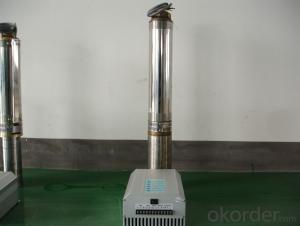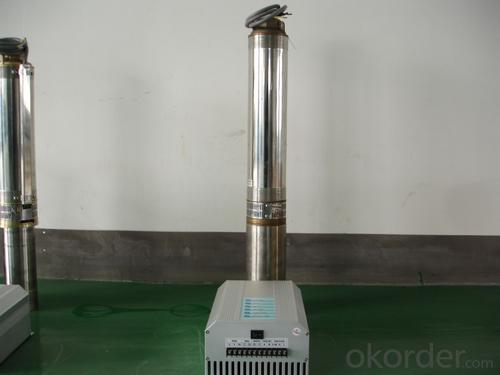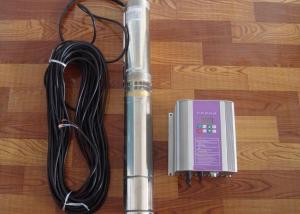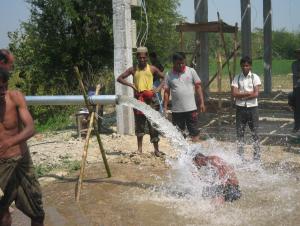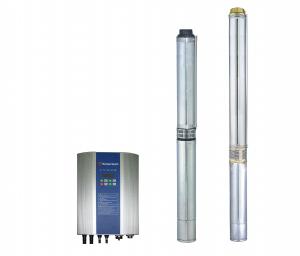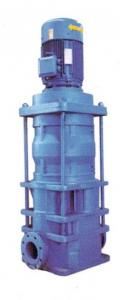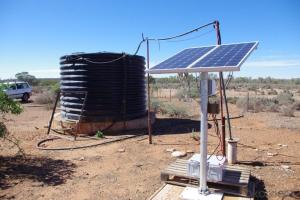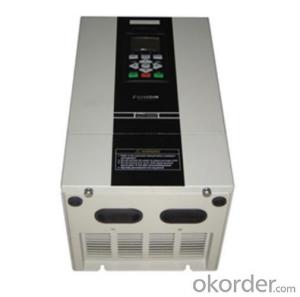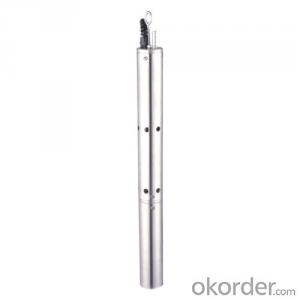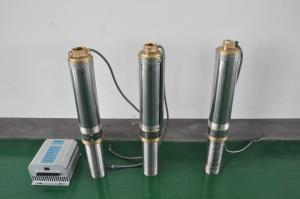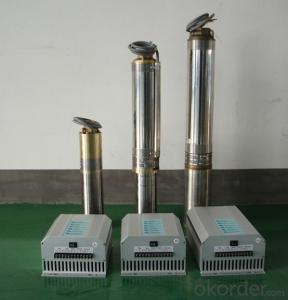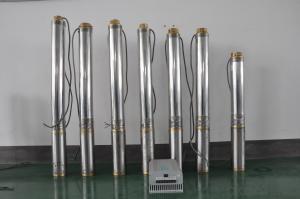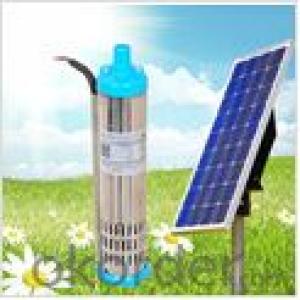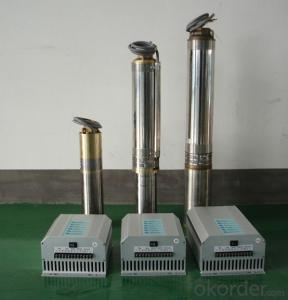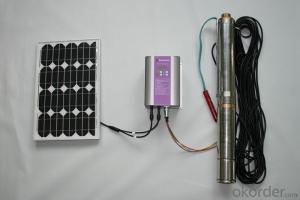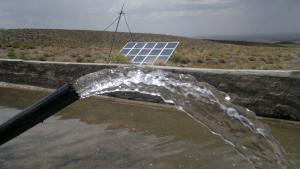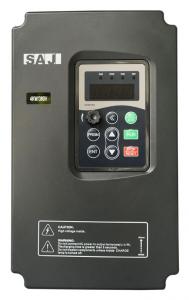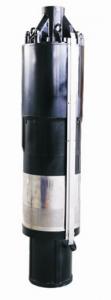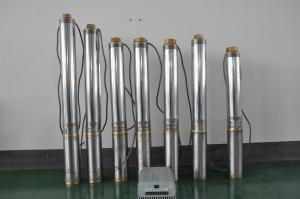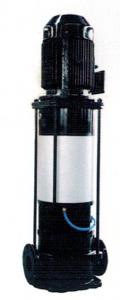1HP Solar Pump Price DC Submersible Pump
- Loading Port:
- China Main Port
- Payment Terms:
- TT OR LC
- Min Order Qty:
- -
- Supply Capability:
- -
OKorder Service Pledge
OKorder Financial Service
You Might Also Like
Item Description :
This superb new addition to our solar fountain range comes with a 10w solar panel,and a powerful fountain pump that is capable of producing fountains of up to 2m in height. As well as being easy to set up and use.Instruction manual is supplied for assembly and maintenance.
Solar Fountain Key Features :
Powered by direct sunlight
No high voltage electric mains required
Safe for children
Max. height of fountain: 2M
Max. flow capacity: 800 L/H(176 GAL)
10W Polycrystalline solar panel included
18V DC brushless pump
Solar Pump Features :
Can produce fountains up to : 2M (tube height) 1.4M (fountain height)
Comes with multiple nozzle accessories
Cable Length : 5M
Solar Panel Features :
10W peak power.
Polycrystalline highly efficient solar panel
Comes mounted in aluminium frame
Comes with ground stake and rotating knob so you can angle your panel toward the sun
What You Will Get :
10W solar panel
Solar pump
Ground Sake
Nozzle accessories
Precautions :
DO NOT alter or change the product itself or its components
Operate pump in freshwater only, never above 50 degrees celsius
Keep away from flammable liquids
Do not connect to any other power supply other than the included
- Q: How does a solar pump handle water source contamination from chemical spills?
- A solar pump does not have the ability to handle water source contamination from chemical spills directly. However, it can help in situations where contaminated water needs to be removed or pumped away from the affected area, minimizing further spread of the contamination.
- Q: Can a solar pump be used for water circulation in aquaculture systems?
- Yes, a solar pump can be used for water circulation in aquaculture systems. Solar pumps are environmentally friendly and can effectively circulate water in ponds or tanks, helping to maintain proper oxygen levels and overall water quality for the aquatic organisms in an aquaculture system.
- Q: How does a solar pump handle water with high mineral content?
- A solar pump can handle water with high mineral content by using a filtration system. The pump first draws water from the source and passes it through a filtration unit that removes impurities and minerals. This process ensures that the water pumped by the solar pump is free from any harmful minerals, making it safe for various applications such as irrigation or drinking.
- Q: Can a solar pump be used for rainwater harvesting or collection?
- Absolutely, rainwater harvesting or collection can definitely benefit from the use of a solar pump. Not only is it an eco-friendly choice, but it is also highly efficient. The solar pump functions by converting sunlight into electricity, which then powers the pump to extract water from various sources like wells, boreholes, or any other available water source. The water obtained can be conveniently stored in tanks or reservoirs for future purposes, including irrigation, household tasks, or even drinking. By opting for a solar pump, rainwater can be effectively collected and stored, which in turn reduces the dependence on conventional energy sources and helps minimize the overall carbon footprint. Furthermore, solar pumps prove to be a cost-effective solution in the long run as they eliminate the need for electricity or fuel, making them a sustainable choice for rainwater harvesting or collection.
- Q: Can solar pumps be used for water supply in military bases or camps?
- Yes, solar pumps can be used for water supply in military bases or camps. Solar pumps are an efficient and sustainable solution for providing water in remote locations. They can operate independently of grid power, making them suitable for off-grid military bases or camps. Additionally, solar pumps require minimal maintenance, reduce dependency on fuel, and have a long lifespan, making them an ideal choice for military water supply systems.
- Q: How does a solar pump help in reducing reliance on grid electricity?
- A solar pump reduces reliance on grid electricity by utilizing solar energy to power the pump, eliminating the need for electricity from the grid. This not only reduces the overall electricity consumption but also decreases the reliance on fossil fuel-based power sources, leading to a more sustainable and environmentally friendly solution.
- Q: Is there any noise generated by a solar pump system?
- Yes, there may be some noise generated by a solar pump system, but the level of noise is generally minimal compared to traditional pump systems. The noise is mainly produced by the mechanical components, such as the motor and pump, but it is typically much quieter than systems powered by electric or diesel motors.
- Q: What is the average cost of a solar pump?
- The average cost of a solar pump typically ranges from $1,500 to $5,000, depending on factors such as the pump's capacity, quality, and additional features.
- Q: Are there any safety considerations for solar pump installations?
- Solar pump installations have several safety considerations that need to be addressed. Firstly, correct and secure installation of the solar panels is crucial in order to prevent potential hazards. This involves ensuring proper grounding and protection against lightning strikes. In addition, it is important to have a qualified professional handle the wiring and electrical connections to avoid any electrical risks. Adhering to the manufacturer's guidelines and local electrical codes is essential for a safe installation. Moreover, it is vital to protect the solar pump system from overheating. This can be achieved by providing adequate ventilation and shading to prevent excessive heat buildup. Furthermore, regular maintenance and inspections are necessary to detect any possible issues or malfunctions that could pose safety risks. This includes checking for loose connections, damaged components, and signs of wear and tear. Lastly, it is important to implement proper signage and safety precautions to alert individuals about the potential hazards associated with the solar pump system. This can involve signage indicating areas with high voltage, safety barriers, and clear instructions on how to safely operate and maintain the system.
- Q: Can a solar pump be used for water supply in flower farms?
- Yes, a solar pump can be used for water supply in flower farms. Solar pumps are a sustainable and cost-effective solution for providing water to flower farms, as they utilize solar energy to power the pump. This eliminates the need for electricity or fuel, reducing operating costs and minimizing the environmental impact. Additionally, solar pumps can be easily installed and are efficient in delivering water to irrigate flower crops, ensuring their healthy growth and development.
Send your message to us
1HP Solar Pump Price DC Submersible Pump
- Loading Port:
- China Main Port
- Payment Terms:
- TT OR LC
- Min Order Qty:
- -
- Supply Capability:
- -
OKorder Service Pledge
OKorder Financial Service
Similar products
Hot products
Hot Searches
Related keywords
